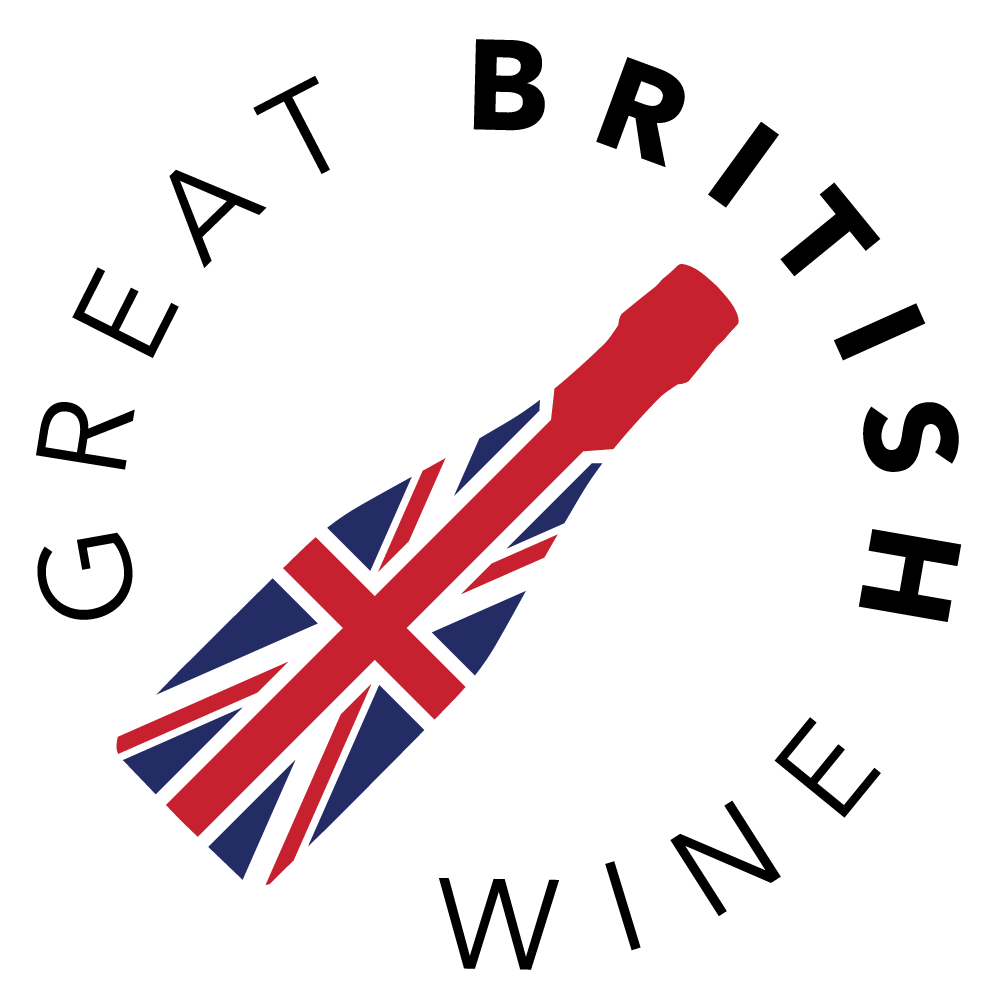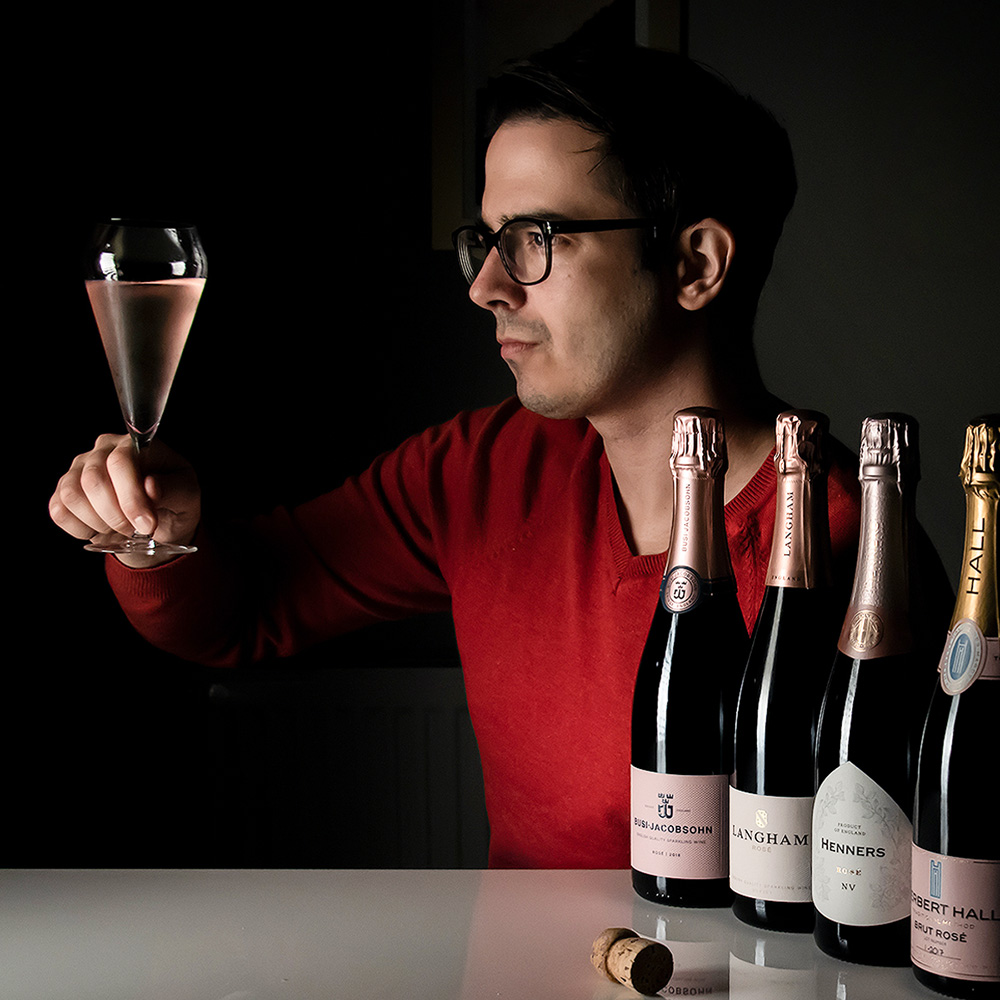
With new 2016 vintage arriving, Gusbourne has seen a decade of English sparkling vintages since their first vintage of 2006. Gusbourne’s fine balance of finesse, purity and complexity has been there since day one, and the GBW team recently had the pleasure of attending a portfolio tasting in London to taste their latest still and sparkling releases. Be sure to check out Sam Povey’s article on the new wines here.
I had a chance to catch up with winemaker, Charlie Holland, whilst sitting in on a rare opportunity to sample a vertical tasting of Gusbourne’s flagship Blanc de Blancs. The tasting began with the newly released Blanc de Blancs 2015, and ran all the way back to the inaugural 2006 vintage.
Charlie opened the vertical tasting session by describing his Blanc de Blancs as the wine that demonstrates the true essence of Gusbourne. It is the Kentish producer’s flagship style, delivering the most expressive and most age-worthy wines in the range. Charlie described his Blanc de Blancs as typically having an expressive citrus backbone, supported by lees-aged complexity and elegant minerality. On barrel usage, Charlie explained that he uses oak to fill the void between the vibrant English acidity and the fresh, lean orchard fruit flavours. A typical Gusbourne Blanc de Blancs will feature up to 10% barrel fermented base wine as part of a complex blend, with the new vintage having been blended from over 120 base wine components.
Charlie’s meticulous, exacting approach allows him not only to demonstrate the very best expression of any given vintage, but by understanding each clone, plot of land and tank or barrel of base wine, he can achieve a level of balance and harmony to enable the delivery of a consistent Gusbourne house style. After tasting six Blanc de Blancs spanning across ten years, there was a clear consistency in style across the wines. There were some standout differences brought about by vast seasonal variations (for example the racy 2013 versus the ripe and creamy 2014). Still, that approach to balancing fruit precision, clean minerality and structured complexity is always there.
One of the most interesting aspects of this vertical tasting was that the majority of the wines had spent a similar amount of time ageing on the lees. This meant that the effect of ageing under cork was also observable in tandem with vintage variation. While the older vintages tended to be a little bit more generous on the dosage side – and from much younger wines – they really did show just how well English sparkling can age. One can expect that the leaner, more determined recent vintages such as the 2013 and 2015 will have an even greater life ahead, bringing in more accomplished blending, vine age complexity and the perfect balance between residual sugar and acidity levels.
Blanc de Blancs Twenty Fifteen
Vintage: The latest vintage release from Gusbourne comes from 2015 which saw bud burst in early April followed by good weather during flowering. Cooler weather in August saw a slower ripening period and saw the grapes retain that signature English acidity.
Tasting Note: On the nose, this youthful new vintage shows both English sparkling and Gusbourne typicity with crisp orchard fruit and citrus peel aromas, light nutty notes and distinctive mineral aromas. To taste, there’s the signature, striking freshness of tingly citrus fruits and crunchy apples, giving way to a refined white peach elegance. The 2105 vintage is only at the very beginning of its journey but it’s already showing a welcoming balance, and certainly has a long life ahead.
Residual Sugar: 8.2g/l
Time On Lees: 42 months
Time Under Cork: 5 months
Blanc de Blancs Twenty Fourteen
Vintage: 2014 was a warm vintage in England, with early bud burst and dry weather through to June. August rain and continued warm conditions ensured exceptional fruit ripeness and an early harvest at the beginning of October.
Tasting Note: This vintage is immediately recognisable as a warmer year, with an opulence of ripe pear, peach and apple on the nose with sweet brioche hints. The taste is broader and more rounded than is typical for the Gusbourne house style, but retains lovely concentrated orchard and stone fruit richness, with a creamy, nougat-like complexity. Immediately gratifying, though I can’t help but think it’s revealed its hand much sooner than any other vintage.
Residual Sugar: 7g/l
Time On Lees: 42 months
Time Under Cork: 17 months
Blanc de Blancs Twenty Thirteen
Vintage: Quite a contrast to 2014, the 2013 vintage was noted for its cool spring and late bud burst. Things picked up in early July, to allow successful flowering and fruit set, with harvest commencing a little later due to the late bud burst.
Tasting Note: The 2013 is in a really interesting place right now, although aromatically a little tight with lemon peel, orchard fruits and a suggestion of toasted brioche developing. This wine has a lot of tension on the palate, with bags of nervy citrus and tangy orchard fruit freshness. It’s only just starting to soften, with some light suggestions of nutty, savoury, toasty beauty. This is the vintage I most want to return to in five to ten years’ time – fortunately, I have a case laying down for this very reason.
Residual Sugar: 8.5g/l
Time On Lees: 48 months
Time Under Cork: 21 months
Blanc de Blancs 2010
Vintage: Perhaps a signature year in English wine, 2010 saw good conditions for bud burst and flowering, but was slowed down in September and October due to unsettled, changeable weather. It is England, after all!
Tasting Note: This has been a firm favourite of mine for quite a while, and while Charlie described this as going through an interesting, slightly shut-down phase, it was still hugely appealing for me. As the first of the more aged flight of wines, this exhibited a more noticeable golden hue, with a nose of baked apple and pear, toasted brioche and smoky minerality.
While the orchard fruit flavours were a little more restrained on the palate, the toasted brioche, hints of caramelized pear flavours and striking nutty notes gave this wine exceptional structure, and contrasted with the still-distinctive citrus fruit freshness. This was perhaps he most Champagne-like of the vertical, with still a good life ahead of it.
Residual Sugar: 9.4g/l
Time On Lees: 42 months
Time Under Cork: 63 months
Blanc de Blancs 2008
Vintage: This was the first vintage to gain an international gold medal for Gusbourne at the IWC 2013. Bud burst was in mid-April, however, summer was cool with poor fruit set. The latter part of the season was perfect, so the lower yield of fruit achieved fantastic ripeness.
Tasting Note: Things really started to evolve here with the 2008 which takes a further step towards golden nectar. The colour was noticeably developed, with a nose to match of baked apricot pudding, toasted brioche, dried citrus peel and a definite savoury, truffled edge. To taste, this is in a really harmonious place right now, with mature apricot, peach and baked pear flavours, toasty notes and hints of caramelised sugar. These older vintages demonstrated higher residual sugar but that sat well with the extensive ageing and complexity that the wines benefited from.
Residual Sugar: 10.5g/l
Time On Lees: 36 months
Time Under Cork: 93 months
Blanc de Blancs 2006
Vintage: The very first vintage of Gusbourne, described by Charlie as the perfect first year for Gusbourne, with April bud burst, a warm, sunny September and a small crop for the first harvest. This 2006 was made from very young two and a half-year-old vines, and was a great start to Gusbourne’s award-winning streak with silver medals at the IWSC and Decanter World Wine Awards.
Tasting Note: This is, without a doubt, the most evolved wine of the line-up, and hardly surprising with nearly eleven years under cork. The 2006 is now quite golden, with a mature nose of candied fruits, dried apricot, savoury tones and some oxidative notes kicking in. The fruit has started to give way to more nutty, savoury tertiary flavours now. Think roasted nuts, demerara sugar and dried stone fruits. The acidity is still shining through though.
Residual Sugar: 11g/l
Time On Lees: 24 months
Time Under Cork: 129 months



